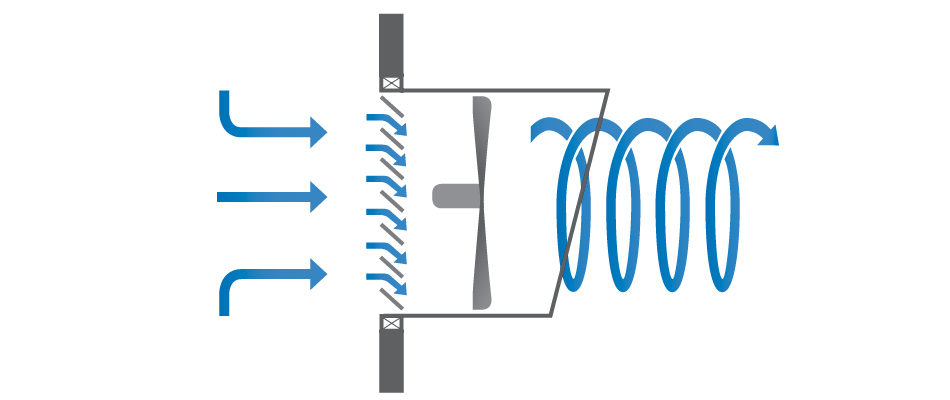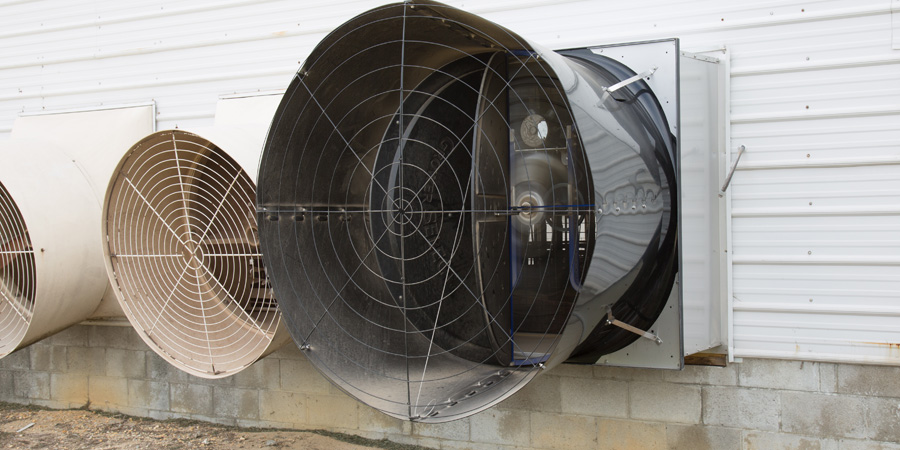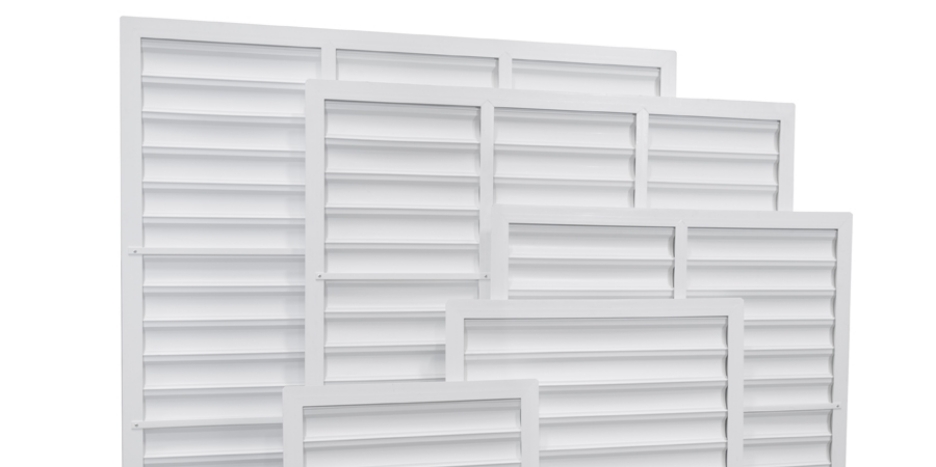By Austin Baker, ventilation director, Hog Slat Inc.
Shutters are an accessory item used to seal off backdrafts when the fan is not operating. Air flows to a fan from inside the building and exits the fan in a spinning pattern.
Because a shutter disrupts the flow of air through the fan, we can expect a 10 to 25% reduction in cubic fee per minute delivery depending on the type and location of the shutter. The force required to open and maintain a shutter in the open position also decreases air delivery.
The most common type of shutter used with agricultural exhaust fans is a vertical vane in either aluminum or plastic.
Aluminum shutters typically are connected with a tie bar, so they open together to prevent flapping. Damage to one of the vanes can cause the shutter not to open completely causing airflow to be restricted. Plastic shutters have individual vanes, are corrosion resistant, and their lighter weight reduces the amount of force to keep them open.

(Image: Exterior Shutter Caption: Placing the shutter on the exit side of a fan blade disrupts air airflow and reduces output by 15 to 25%)
Placing a shutter on the exit side of a fan interrupts the spiral motion of the air leaving the fan blade causing backpressure. We can expect a 15 to 25 % reduction using exterior-mounted shutters.

Moving the shutter to the intake side of the fan improves air delivery as the disruption to the air stream occurs before the fan blade. Mounting a shutter in an interior position only reduces air delivery by 10 to 15%.

Butterfly shutters consist of a circular damper with a vertical hinge mounted on the fan exterior. Butterfly shutters increase airflow by over standard louvered shutters as they offer very little resistance to air flow once they are open. Expect performance increases of 10 to 20% over interior-mounted shutters. This advantage increases when dust accumulates; butterfly shutters are not affected by dust buildup to the same extent as louvered shutters.
Butterfly shutters, however have one significant disadvantage. During cold weather, condensation forms on the interior of the fan housing, including the motor and drive system. Over time this increased moisture can cause accelerated deterioration of the fan components. With interior-mounted shutters the condensation forms on the shutter keeping the fan housing drier.
One final thought, a dirty shutter robs up to 8% of a fan's cfm delivery because of the extra energy required to keep the vanes open. No matter what type of shutter is installed on a fan, keeping it clean and dust-free pays dividends.
References
- Fabian, Eileen E. 2016. Selecting Rated Ventilation Fans. Professor of Agricultural Engineering. Penn State University.
- Czarick, Michael. No date. Improving Tunnel Ventilation Fan Energy Efficiency. Department of Poultry Science. The University of Georgia.












 Україна
Україна Méjico
Méjico



